Petroleum production began in 1902 near coastal oil seeps, but the real boom arrived in 1957.
Alaska’s petroleum history began long before statehood in 1959 and the major oilfield discovery two years earlier.
The first Alaskan oil well with commercial production was completed in 1902 in rugged, coastal territory where oil seeps had been known for years.
Despite limited cable-tool drilling technology of the day, the Alaska Steam Coal & Petroleum Syndicate produced oil near the remote settlement of Katalla on Alaska’s southern coast. The small oilfield also led to construction of Alaska Territory’s first refinery.

The Katalla discovery well, drilled on private land owned by the Alaska Development Company, marked the first unsteady steps of Alaska’s petroleum industry.
“Among Alaska’s vast resources, gold and oil were the rich twins that put the territory on the map near the turn of the last century,” noted Tricia Brown in a 2012 article, “Katalla: Alaska’s First Oil Well.”

Drilled using cable tools in 1902, the first Alaska oil well proved production was possible in the territory – but difficult and costly to transport. Photo courtesy University of Alaska Fairbanks Archives.
“Gold discoveries had been made in the interior and at Nome when, in September 1902, the Alaska Development Company, known as the English Company, made the first commercial oil discovery at Katalla, 47 miles southeast of Cordova,” she explained.
Enthusiastic reporting about Alaska Steam Coal & Petroleum Syndicate’s success brought investors and competing exploration companies. Newspaper articles — often wildly exaggerating the Katalla discovery — encouraged a rush of entrepreneurs looking for opportunities similar to the famous gold rush.
“A special dispatch from Valdez announces an immense oil gusher was struck at Cotella [Katalla], on the Southern Alaska Coast, at a depth of 200 feet,” reported the New York Times in a vivid (but inaccurate) article, adding, “The gusher took everything away with it, rising nearly 200 feet before it could be capped.”
Adding that the Alaska Steam Coal & Petroleum Syndicate had announced its intention of “refining the oil on the spot,” the Times article concluded that an important new industry had arrived in the territory. A January 1903 article in the St. Paul Globe gushed even more.
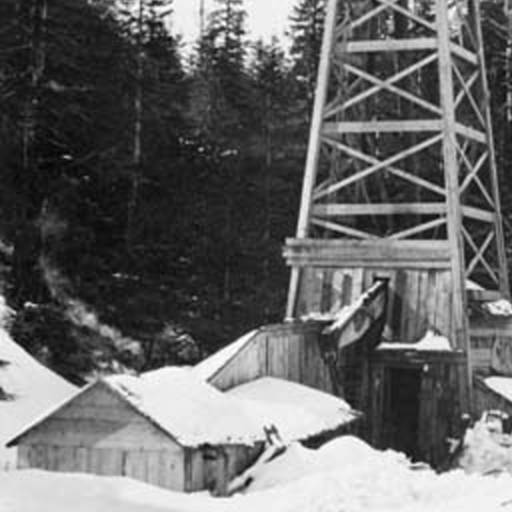
Harsh winters at the Katalla oilfield frequently challenged men and equipment. Photo courtesy University of Alaska Fairbanks Archives.
“Oil experts who have just returned to Tacoma from the oilfields of southern Alaska declare that they will rival the fields in Pennsylvania in the matter of production within a short time,” exclaimed the Minnesota newspaper.
Such accounts of Alaska Steam Coal & Petroleum Syndicate’s success attracted new companies, including the Alaska Petroleum and Coal Company (1903), Amalgamated Development Company, and the Alaska Oil & Refining Company.
The oil fever centered on Alaska Development Company’s 826-acre Katalla patent along Oil Creek and Arvesta Creek as cable-tool rigs multiplied there. “I expect to see, next year, a dozen big outfits actively at work developing the oil fields surrounding the city,” wrote John F.A. Strong, publisher of the Katalla Herald, in 1907.
“I gave it out that the Alaska Petroleum and Coal Company stood ready to give every encouragement to oil men to come here, and we are ready to let oil developers have from 40 to 80 acres each to begin work upon, on the most liberal terms,” added the future governor of the Alaska Territory.
Territory Boom Town — Where Rails meet Sails
Katalla was on Controller Bay and accessible by water if the weather was right. This was rough country, but planned railroad service from Alaska’s prolific interior copper mines promised new opportunities.
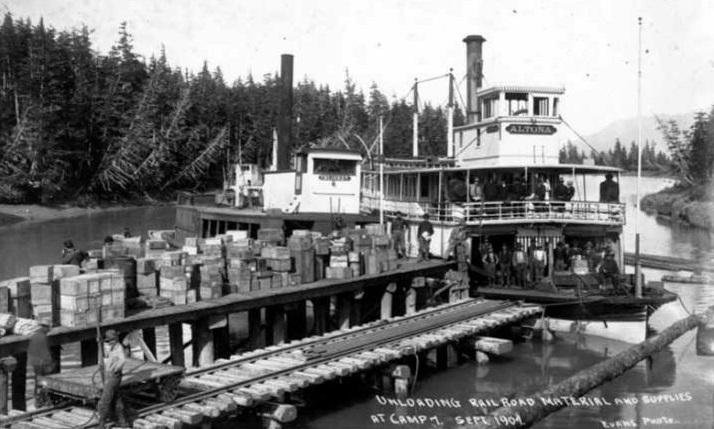
Unloading supplies at the dock in Katalla, Alaska Territory. Photo courtesy Alaska Digital Archives.
As the Alaska Pacific Railway and Terminal Company started building its line, Katalla promoted the venture by declaring, “Katalla, Where the Rails Meet the Sails!” Drilling on the original patent continued and a number of successful wells continued to produce “Pennsylvania quality” crude oil.
And yet before the year ended, Katalla residents would be reduced to subsisting on salt pork and porcupine after storms cut off supplies from the outside. “Ship After Ship Undertakes to Land Relief but in Vain – Six Weeks of the Roughest of Weather,” reported the Marshfield, Oregon, newspaper.
Violent storms in late 1907 isolated Katalla and destroyed the breakwater along with an 1,800-foot dock under construction by the Copper River and Northwestern Railroad. The village of Cordova about 50 rugged miles west of Katalla was chosen to be the new terminus and thereby the Katalla oilfield’s nearest railhead.
Katalla was further isolated when the Army’s Washington to Alaska Military Cable and Telegraph System also changed its destination to Cordova. Without a railroad or telegraph, Katalla’s population dropped from a peak of 5,000 residents to 770 residents. Then prospects for Alaska’s first oil boom town got even worse.
Concerned that overdevelopment of oil supplies on federal lands would diminish the United States’ petroleum reserves, President William Howard Taft intervened.
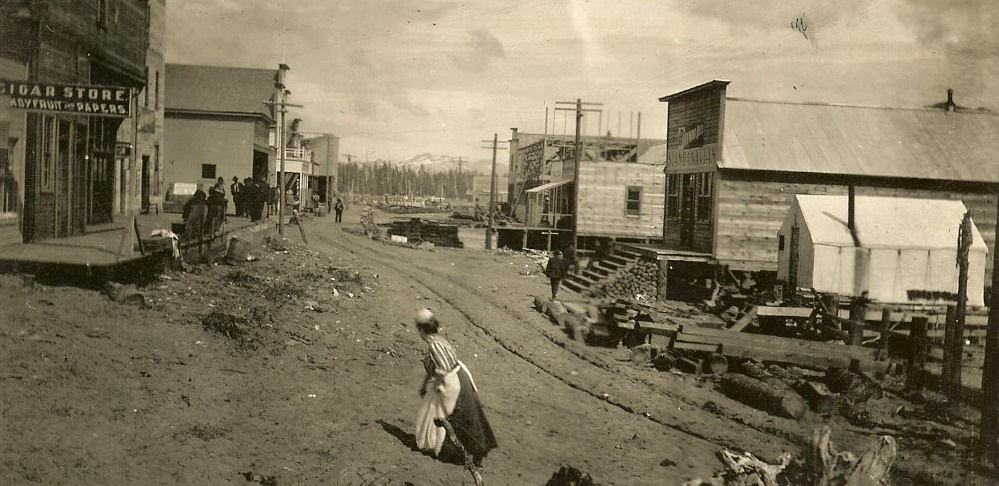
A view of Katalla’s Front Street not long after the town’s historic 1902 oil discovery. The population would later peak at about 5,000 resident before a dramatic decline. Photo courtesy Alaska Digital Archives.
On November 2, 1910, he issued an executive order preventing further exploration and drilling in the Alaska Territory. Only Katalla’s privately owned 826-acre patent remained open amidst all of Alaska’s vast petroleum potential of almost 425 million acres.
Despite this setback, the Alaska Oil & Refining Company rebounded by building Alaska’s first refinery.
Alaska Territory’s First Oil Refinery
The refinery on Katalla Slough serviced local needs for gasoline, kerosene and lubricants. Once a week, the company shipped 60 giant, 100-gallon drums to Cordova. Products traveled to markets by boat, barge — or towed in floating tanks.
Alaska Oil & Refining operated the refinery until 1915, when the St. Elias Oil Company took over the company’s assets. Petroleum exploration was still limited to the original 826 acres permitted by Taft’s executive order.
St. Elias Oil advised investors of expansion plans to “increase the output of the refinery…pumping four wells, anticipating four more within the year. Will install tanks at Katalla to facilitate immediate shipment.”
The company drilled three successful wells (and three dry holes) that helped keep the refinery running as the rest of Alaska imported in excess of 732,000 gallons of illuminating oil and 373,000 gallons of lubricants.
Nonetheless, Katalla’s population dropped to 87 hardy souls by 1920. Congress then passed the Mineral Leasing Act to finally open the rest of Alaska to petroleum exploration.
“All the Alaska oil lands were withdrawn in 1910, and patent has been granted to only one claim, which is in the Katalla field,” noted a 1921 report of the U.S. Geological Survey.
“This condition persisted until the passage of the recent oil and gas leasing act of February 25, 1920,” the report explained. “The provisions of this law applying to Alaska appear to be liberal and will permit prospecting the fairly accessible localities near the Pacific where seepages have been found.”
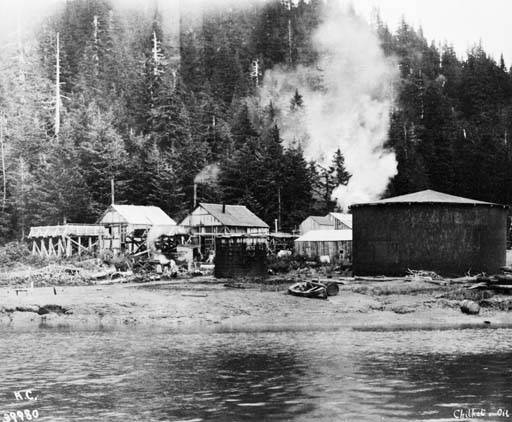
Oil from the Katalla field was processed at Alaska’s first refinery — until it burned down on Christmas eve in 1933. Photo courtesy Alaska Digital Archives.
The 1921 report, “Preliminary report on petroleum in Alaska,” also noted areas with oil seeps “now give promise of being of commercial importance. There are, however, some indications of oil in the extreme northern part of Alaska, a region at present almost inaccessible.”
That same year St. Elias Oil sold out to Chilkat Oil Company and the federal government issued about 400 new exploration permits. But few came to Alaska and none to the Katalla oilfield for the next 65 years. The Alaskan Crude Corporation drilled briefly there in 1985 but suspended operations.
While Alaska’s oil industry struggled, California’s had been booming; by 1921 annual oil production exceeded 77 million barrels with oil selling for just $1.73 per barrel (oil prices would stay below $2 a barrel until 1948). Low oil prices meant transporting oil from Alaskan oilfields made no economic sense.
Chilkat Oil’s refinery continued to deliver Katalla oilfield products to nearby customers.
Alaska’s first refinery burned on Christmas eve of 1933, taking with it the fortunes of Chilkat Oil Company and the town of Katalla. The refinery had produced a total of about 6.5 million gallons of distillates, but there would be no more. With no economic engine, Katalla was soon abandoned – with only 12 residents by the 1940s.
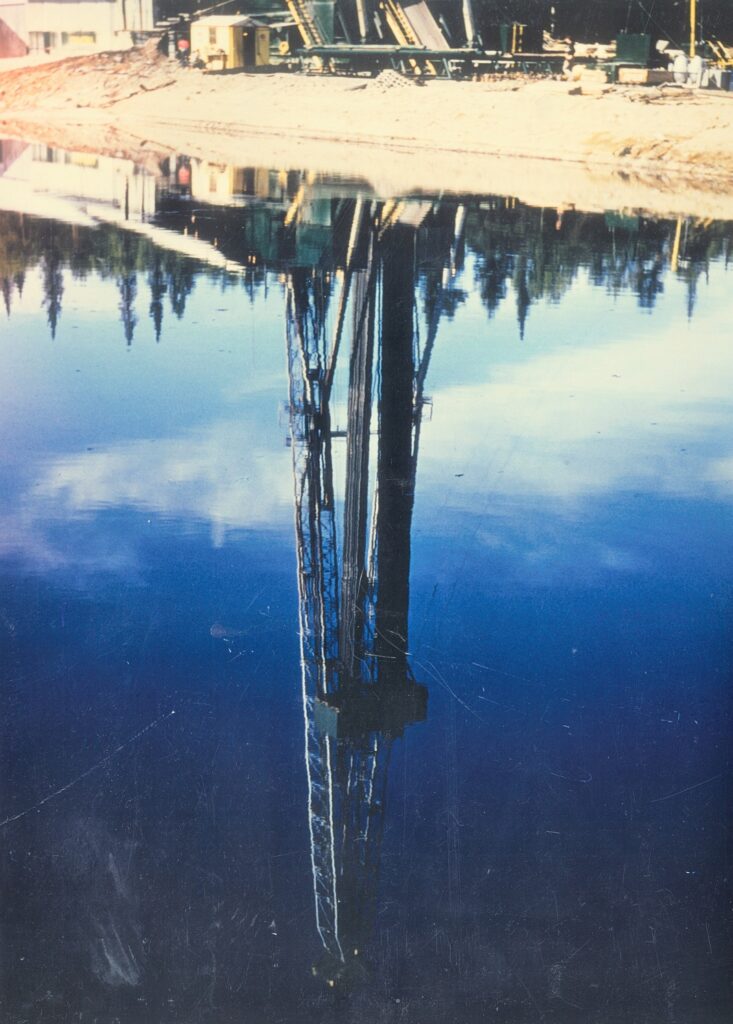
Mud pit reflection of the historic Swanson River Unit No. 1 well taken about three days after the 1957 oilfield discovery in Alaska Territory, courtesy retired geologist Doug Baily, Homer, Alaska.
When a 9.2 magnitude earthquake raised the land around Katalla by eight feet in 1964, the town’s old waterfront disappeared. “It put the last nail in the coffin,” according to the Anchorage Press. Katalla became a ghost town.
Although Katalla’s heritage as home of the first Alaska oil well and refinery was acknowledged in 1974 by the National Register of Historic Places, the town’s 30 years of oil production actually amounted to less than what Alaska’s North Slope would yield in a single day.
Despite its fate, Katalla proved petroleum production was possible in Alaska Territory — but transporting oil to market was difficult and expensive. In 1946, the U.S. Geological Survey and U.S. Navy began an eight-year exploration program, but found only two minor oil deposits after drilling 36 wells.
Swanson River Oil Discovery
The July 19, 1957, discovery of oil north of Sterling at Swanson River provided, according to Alaska’s first governor William Egan, “the economic justification for statehood for Alaska,” noted a 2017 article, “Oil workers celebrate 60 years of Swanson river.”
The remote well — drilled by Richfield Oil Corporation, a predecessor of ARCO — had produced 900 barrels of oil a day. This was the first significant oil discovery in Alaska since 1902.

The Anchorage Daily News recognized the historic significance of Richfield Oil Company’s 1957 oilfield discovery.
Atlantic Richfield sent geologists Bill Bishop and Ray Arnett to explore the 50,000 acres the company had leased. “Bishop and Arnett drilled a successful oil well at Swanson River, in the northwest Kenai Peninsula. Their announcement of the well on July 23 set off a flurry of economic activity that some compared to the gold rush.”
By 1959, Unocal discovered a major natural gas field near the Swanson River oilfield. When Atlantic Richfield and Humble Oil companies discovered the North Slope’s Prudhoe Bay field in 1968, the largest oilfield in North America inspired the industry’s modern engineering marvel, the Trans-Alaska Pipeline.
Many historic images can be found at the University of Alaska’s Digital Archives.
_______________________
Recommended Reading: From the Rio Grande to the Arctic: The Story of the Richfield Oil Corporation (1972); Kenai Peninsula Borough, Alaska
(2012). Your Amazon purchase benefits the American Oil & Gas Historical Society. As an Amazon Associate, AOGHS earns a commission from qualifying purchases.
_______________________
The American Oil & Gas Historical Society (AOGHS) preserves U.S. petroleum history. Please become an AOGHS annual supporter and help maintain this energy education website and expand historical research. For more information, contact bawells@aoghs.org. © 2024 Bruce A. Wells. All rights reserved.
Citation Information – Article Title: “First Alaska Oil Well.” Authors: B.A. Wells and K.L. Wells. Website Name: American Oil & Gas Historical Society. URL: https://aoghs.org/petroleum-pioneers/first-alaska-oil-well. Last Updated: Septmber 7, 2024. Original Published Date: March 23, 2015.



